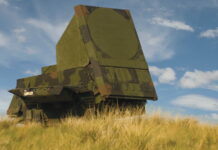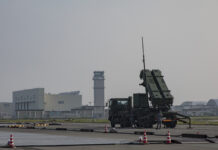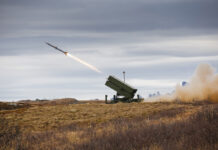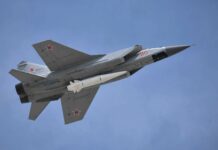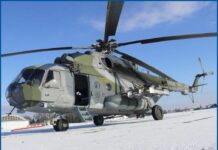For the overwhelming majority of the war in Ukraine, the highly capable air defences of both sides have greatly limited the employment and usefulness of manned combat aircraft of all types. In cases where aircraft were used, pilots typically stuck to low altitudes to avoid being detected and engaged, or relied on long-range standoff weapons to avoid becoming a target for surface-to-air missiles. The absence of reliable air support has turned the war into a slow-paced attritional slog reliant on large quantities of artillery munitions, UAVs, and loitering munitions. Yet this battlefield factor will only remain as long as air defence munition supplies allow, and here is where the situation appears to be slowly turning against Ukraine.
To provide a sense of the scale of Ukraine’s task, leaked US intelligence documents from March 2023 estimated that Ukraine’s combined SHORAD/MRAD/LRAD missile expenditure figures stood at around 486 missiles per month (or 5,832 per year). Note that this does not include MANPADS and VSHORAD missile expenditure, which was around 340 per month. Today, the numbers required are probably somewhat different, as Russia has expended a large portion of its guided missile and loitering munition stockpile. However, Russia has already greatly ramped up its UAV and loitering munition production over 2023, and with Russia’s 2024 defence budget set to be its highest ever, it is reasonable to expect a significant ramping up in the production of ballistic and cruise missiles over the course of the year. Ukraine will therefore need to scale its air defence capabilities to match this growing threat, but this may be quite difficult to achieve in practice.
Back in early 2023, Ukraine still had stocks of its Soviet legacy missiles, but according to the aforementioned leaked US documents, most of these were predicted to run out by May 2023. This seems to have been largely borne out in reality, with Ukrainian interception reports crediting fewer and fewer interceptions to Soviet legacy GBAD systems as 2023 dragged on, while reports of interceptions by Western GBAD systems became much more common. At the start of 2024, it is probably fair to say that Ukraine’s GBAD is now functionally Western. The key SHORAD/MRAD/LRAD systems and munitions known to be in service with Ukraine are summarised in the table below:
| System | Missile(s) | Missile production status |
| IRIS-T SLS | IRIS-T | In production |
| IRIS-T SLM | IRIS-T SL | In production |
| NASAMS | AIM-120 AMRAAM (variants not confirmed) AMRAAM-ER AIM-9X |
In production (all) |
| PATRIOT | PAC-3 CRI
PAC-2 GEM-T |
In production (all) – however possibly low-rate due to scaling-up of PAC-3 MSE production. |
| Spada 2000 | Aspide 2000 | Production status uncertain (possibly low-rate production) |
| Crotale NG | VT1 | Production status uncertain (possibly low-rate production) |
| SAMP/T | Aster-15
Aster-30 |
In production (all) |
| I-HAWK | MIM-23 (variants not confirmed) | No longer in production |
| Buk ‘FrankenSAM’ | RIM-7P/AIM-7 | Production status uncertain (possibly low-rate production) |
| ‘Ground-launched ASRAAM’ | ASRAAM | In production |
While Ukraine currently operates a broad range of Western systems, over time Ukraine’s GBAD is likely to coalesce around a smaller range of in-production systems as stocks of Western legacy missiles run out, and Ukraine’s reliance on in-production Western SAMs increases. The most likely candidates here are NASAMS, PATRIOT, and IRIS-T SLS/SLM, since they are already in Ukrainian service, and the missiles used by these systems are produced in greater quantity than many of their competitors. These may be joined by other modern Western missile types, albeit likely in smaller quantities.

However, at the same time, many Western countries are looking to modernise and replenish their stocks of these same missiles, potentially putting future Ukrainian SAM procurement priorities in a state of de facto competition with allied procurement programmes. This risks creating a bottleneck in supply, and it is not immediately clear how Ukraine could address this. If left unchecked, Ukraine’s SAM depletion could gradually lead to the dangerous scenario of Russia achieving air superiority. Even if this superiority only begins as localised to certain regions or small portions of the front, it could nonetheless still spell disaster for Ukraine, and radically change the state of the war. As such, ensuring a reliable SAM supply is among Ukraine’s highest priorities for the year ahead.
Marc Cazalet



